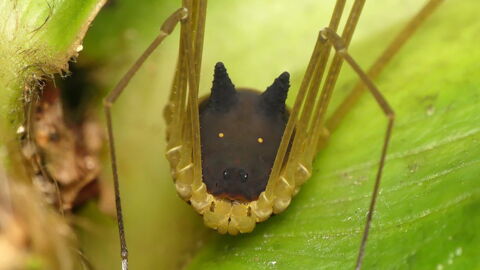Their reputation precedes them: it is in the little dark corners that spiders, sworn enemies of those suffering from arachnophobia, crawl around... Well the myth that surrounds them is being blown away by the discovery of a team of German researchers: that spiders have started accommodating themselves more and more to light sources! At least those of cities…
Discover our latest podcast
‘I was walking one night along a road, observing all these big spiders on their webs [woven on the very street poles],’ recalls Tomer Czaczkes, a biologist at the University of Regensburg, in Germany. The starting point of a study only for the most courageous - arachnophobes, abstain.
Spider of the cities, spider of the fields
The researcher, supported by colleagues from the University Louis-and-Maximilian Munich and the Dutch University of Aarhus, has indeed set off valiantly in search of spider eggs’ cocoons, more precisely the species Steatoda triangulosa, the Mediterranean Black Widow or Malmignate that can be found in houses.
A search conducted across fields in the countryside, but also in cities of Germany, France, and Italy. Once their perilous harvest was completed, the scientists arranged the fruit of their ‘harvest’ of arachnids in boxes. These containers were a little particular, since only one side was lit.
They were able to observe the behaviour of small animals after the hatching of their eggs. Weaving their web carefully, the spiders then distinguished themselves according to their origins, urban or rural.
‘We discovered that the young spiders [from the countryside] avoided the bright side, and liked to weave their canvases in the shadows. The urban juveniles really did not care where they were building their webs. The light didn’t seem to disturb them,’ reveals to the Telegraph Ana Maria Bastidas-Urrutia, co-author of the works and biologist at the University Louis-and-Maximilian Munich.
Adapting to light
To explain this astonishing dichotomy, the researchers put forward a hypothesis: that of the adaptation of city spiders to artificial light. An increased tolerance that would allow them to capture the many prey attracted to the lighting points, including the moths, a favorite dish for the Malmignate species.
Rather than a passing behaviour, it seems, according to researchers, that this adjustment to artificial light is anchored in the genome of spiders; the young specimens that were studied were caught even before the hatching of their eggs, and thus were never confronted with their natural environment.
On the basis of these findings, Tomer Czaczkes believes that such adaptations to light could also affect other species of urban spiders. A point of view shared by Lawrence Bee, environmental consultant and member of the British Arachnological Society: ‘Public lighting attracts a big population of insects at night, so it's not surprising that spiders can adapt to that kind of thing.’
Negative effects in some species
Thus the house Malmignate - and many other arachnids - would have been able to accommodate themselves; and even take advantage of the artificial light. A behaviour that does not seem to be unanimous within the spider family.
‘A recent study showed that increased exposure to light led to reduced survival in other spider species, there may be some positive effects for some species, but probably negative effects for many other species,’ says Maxime Dahirel, an ecologist specialising in the links between spiders and urbanisation at the University of Ghent, Belgium. Anyway, it seems that the Malmignate of the cities is no longer afraid to leave the little dark corners ...!















